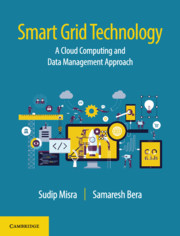14 - Simulation Tools
from Part IV - Smart Grid Design and Deployment
Published online by Cambridge University Press: 20 October 2018
Summary
In Chapters 5–13, we discussed several methodologies that are useful to address different problems present in the smart grid in order to provide electricity to the users in a cost-effective and reliable manner. However, we also need to realize the system behavior and impact of the parameters used in a particular model through different controllable experiments. Thus, the use of suitable simulation tools is an important concern.
As we saw earlier, smart grid technologically combines two different entities–power grid and communication network. Therefore, a smart grid simulator needs to take into account the properties of both the power grid and the communication network. There are many tools available for the simulation of smart grid. In this chapter, we discuss some of the useful simulation tools that can be used for conducting smart grid experiments.
Simulation Tools
Open DSS
Open distribution system simulator (OpenDSS) [1] is one of the popular power grid simulation tools available. It deals with power grid system planning and analysis. As the name suggests, using this tool, one can model the power distribution system and analyze the behavior of the system prior to actual deployment. Primarily, it can help to analyze the needs of distributed generation units in a power grid system. Holistically, it supports future needs such as the modeling of smart grid applications, power delivery, and harmonics analysis. Some of the wide applications of OpenDSS simulation tools are as follows [1]:
• Power distribution planning and analysis
• Analysis of integrating multiple distributed generations
• Distributed storage modeling
• Wind power simulation
• Solar photo-voltaic simulations
• Impact of electric vehicles modeling and simulation
• Daily/annual energy load and generation simulation
By default, this simulator does not include any provision to have communication protocols that can be used to design the smart grid communication networks. However, it provides the flexibility of integrating communication models into it. It can also easily be integrated with MATLAB or other well-known simulators.
MATPOWER
MATPOWER [2] is another simulation tool designed for analyzing power problems in a power grid. This is a package that can be integrated with MATLAB. It is useful to simulate optimal power flow problems present in the smart grid. However, the features of simulation supported by this tool are purely related to power grid simulation. MATPOWER does not have any provision to model the communication networks.
- Type
- Chapter
- Information
- Smart Grid TechnologyA Cloud Computing and Data Management Approach, pp. 227 - 230Publisher: Cambridge University PressPrint publication year: 2018



